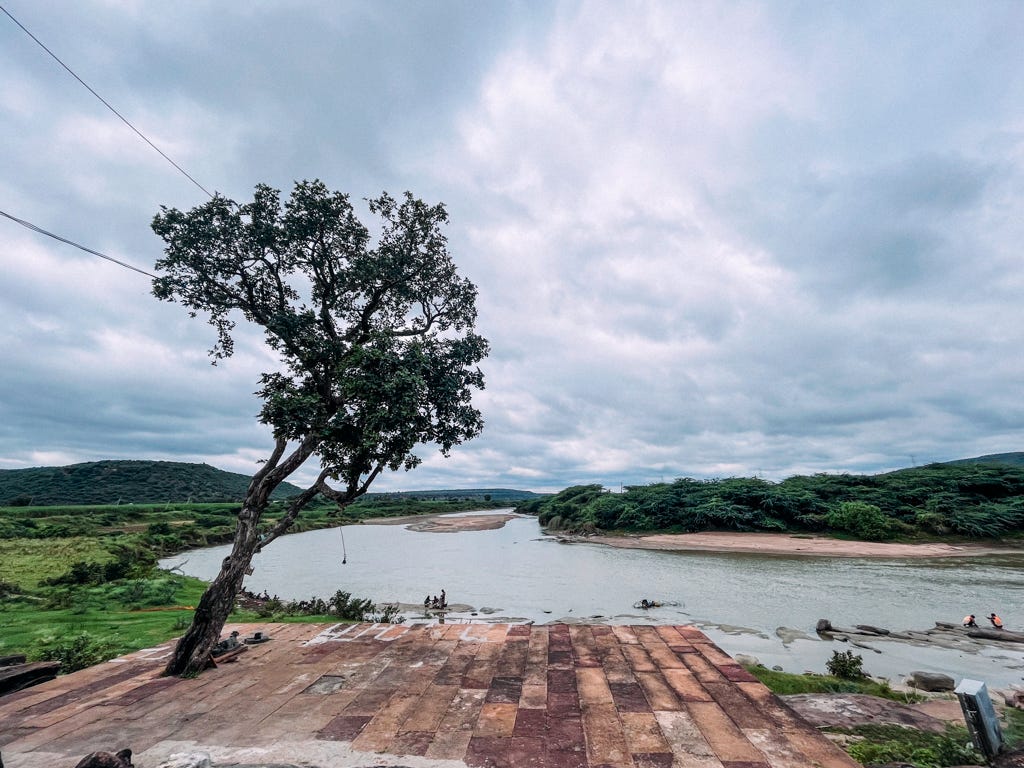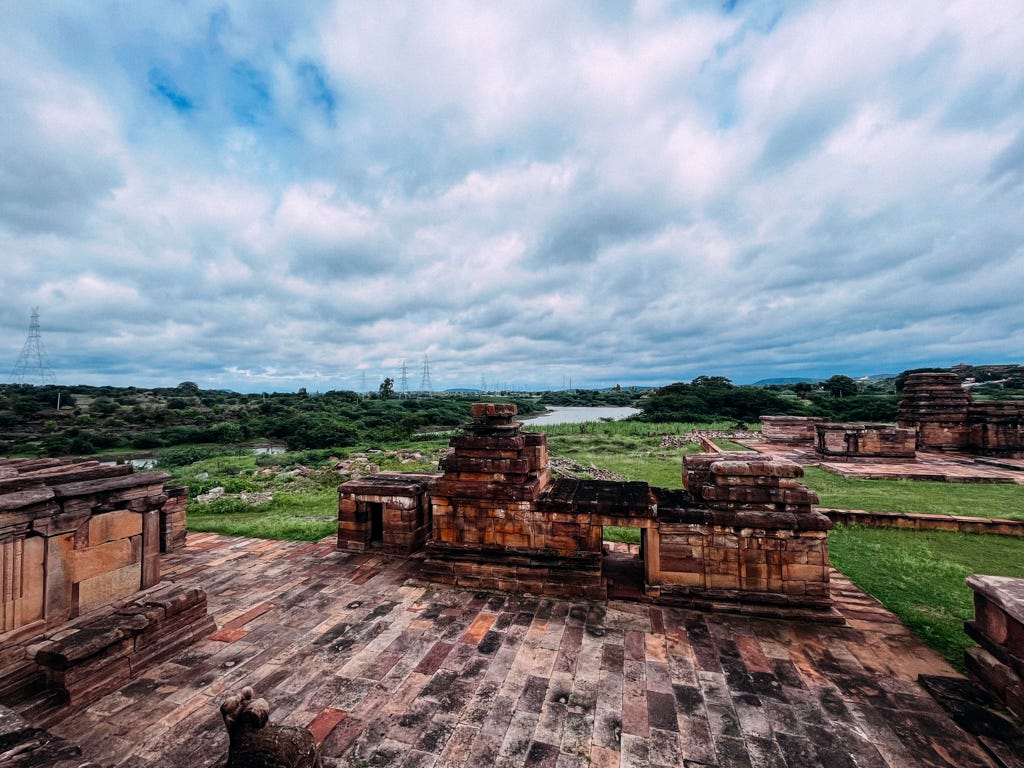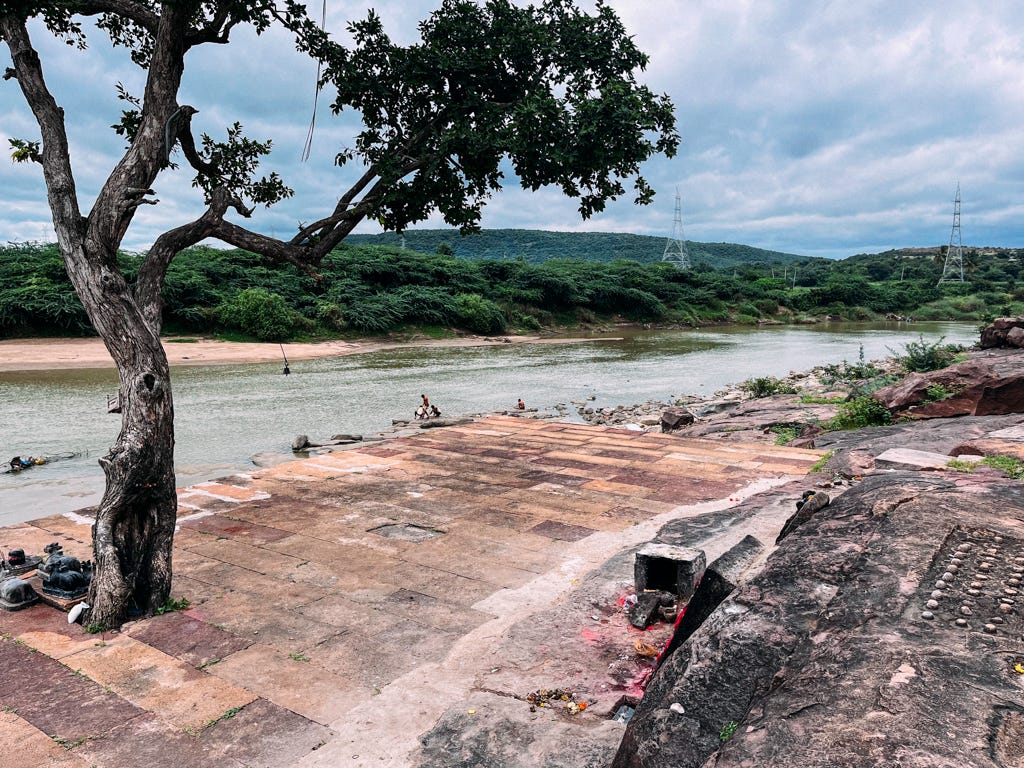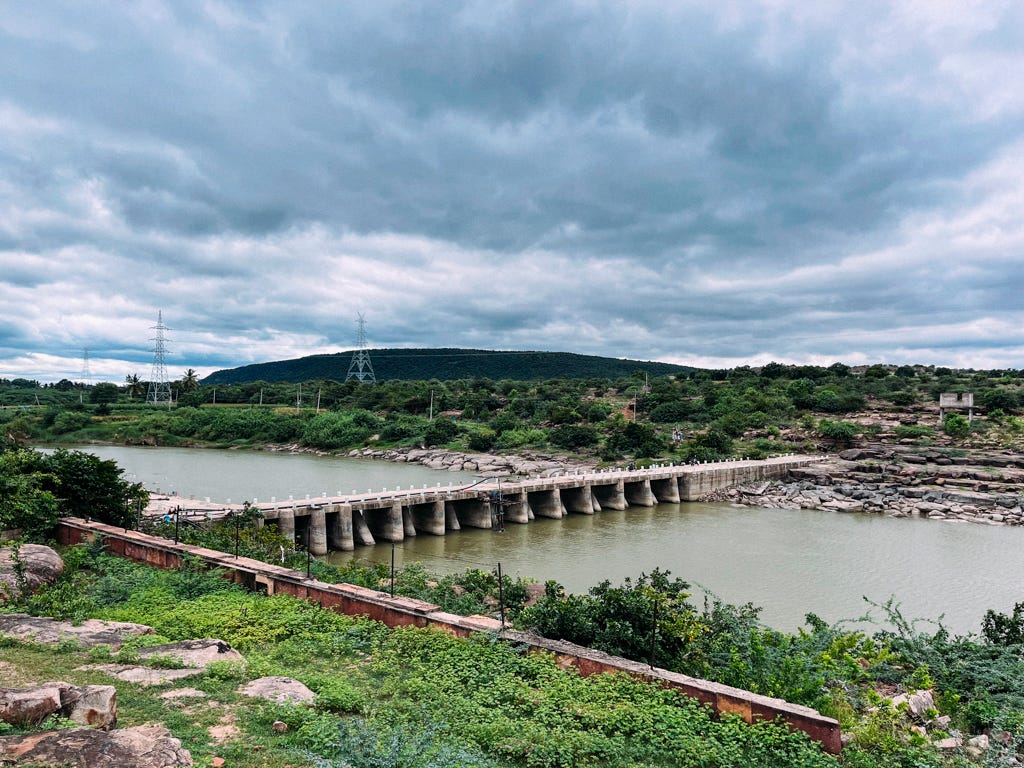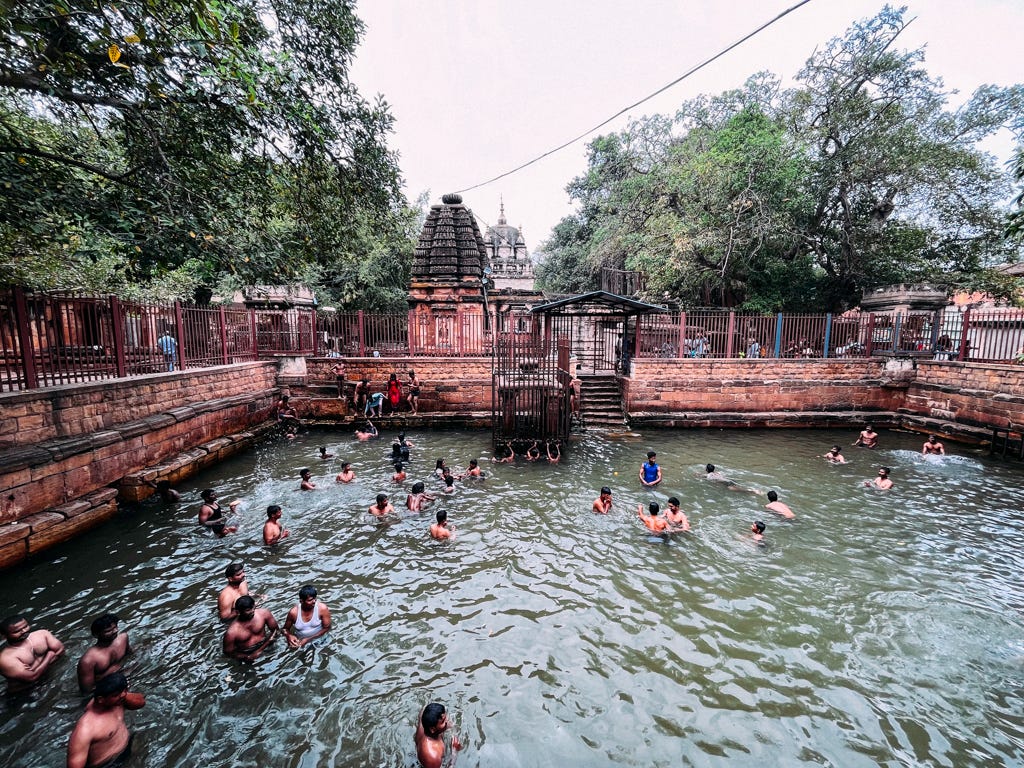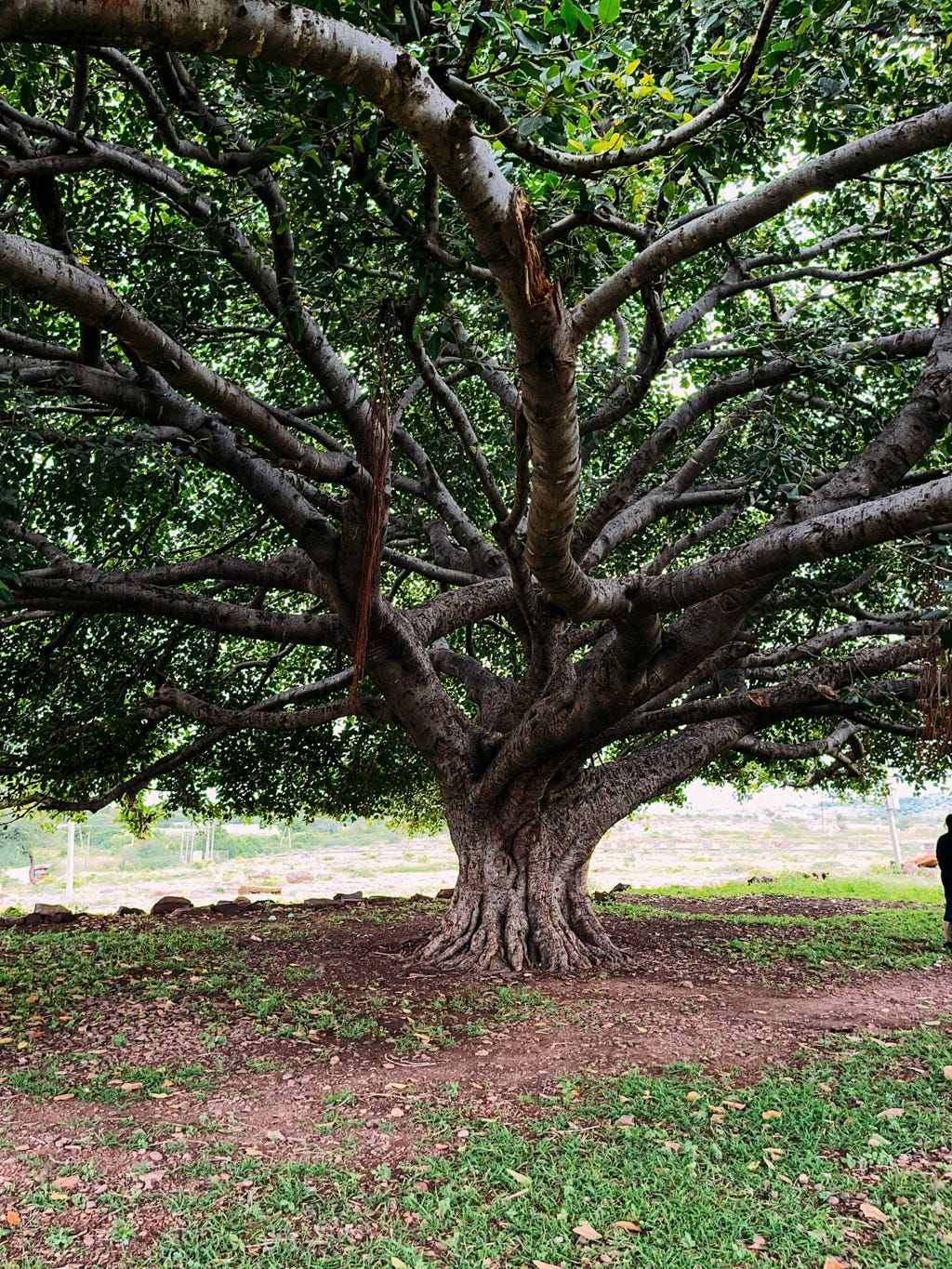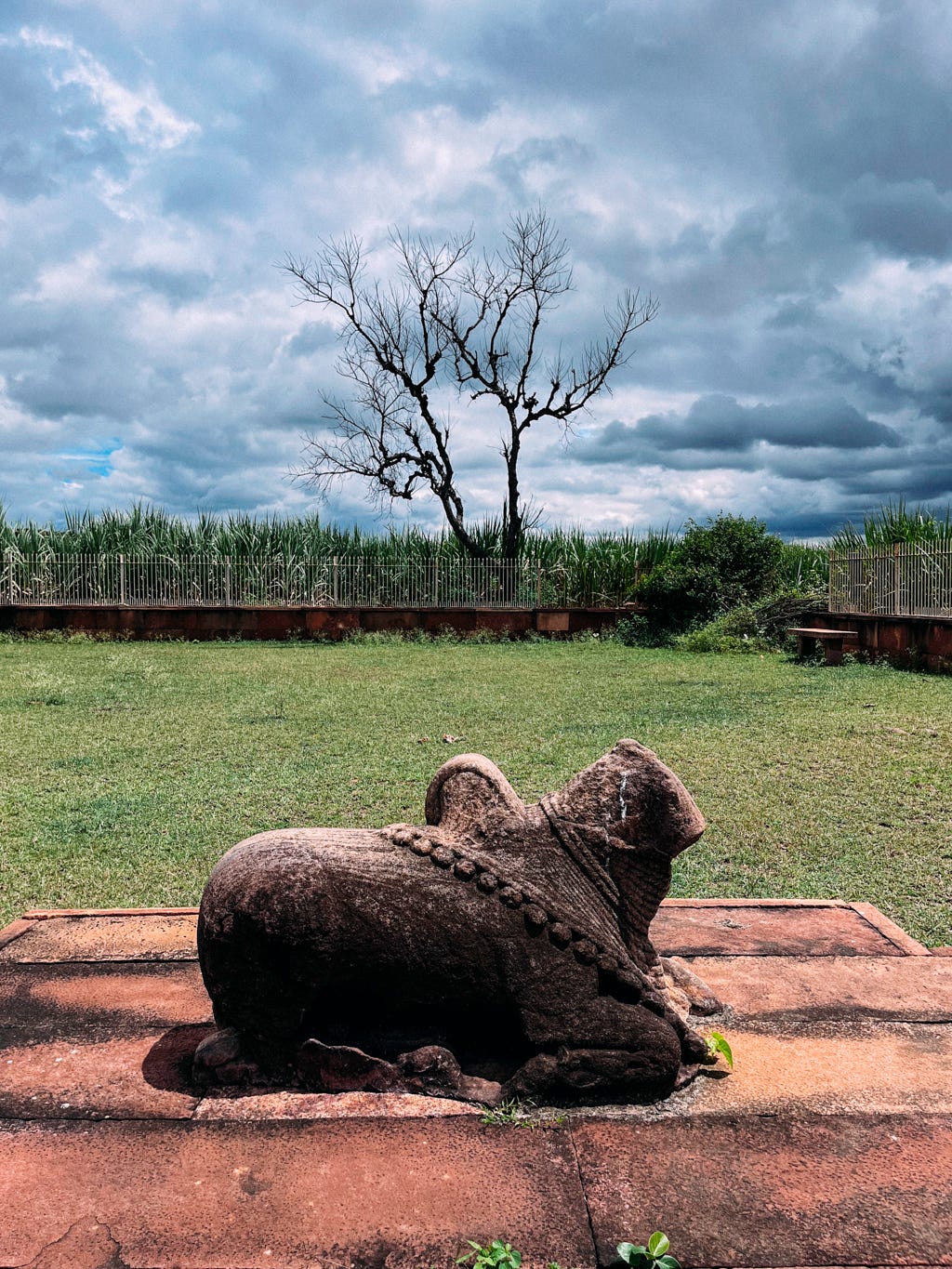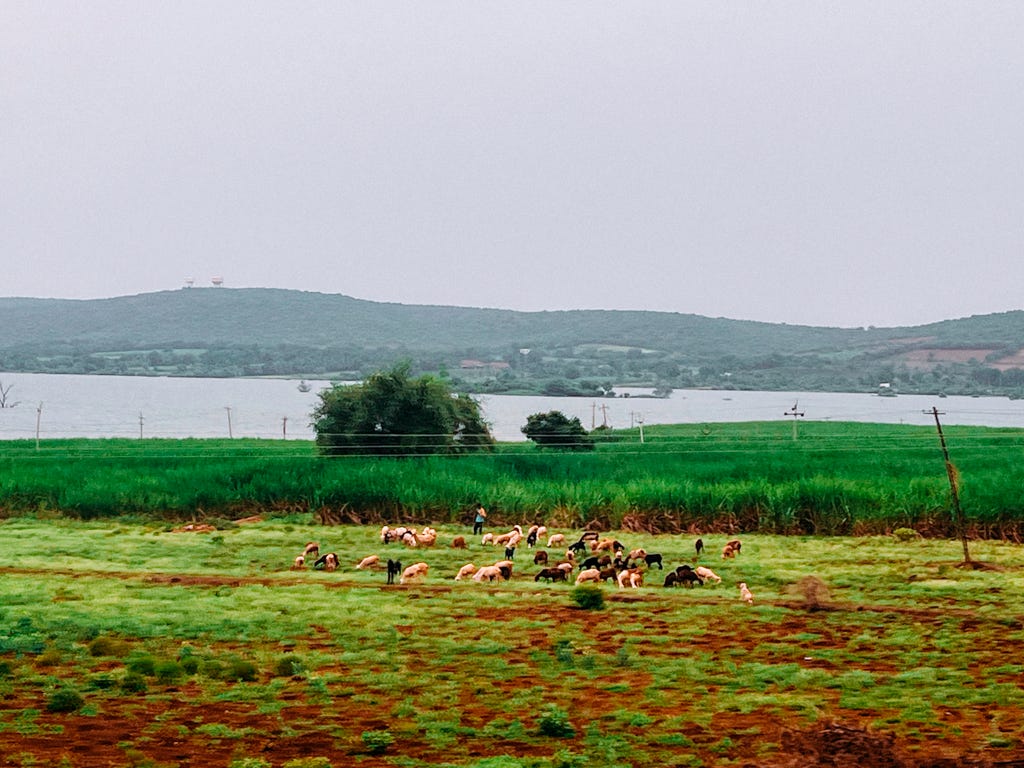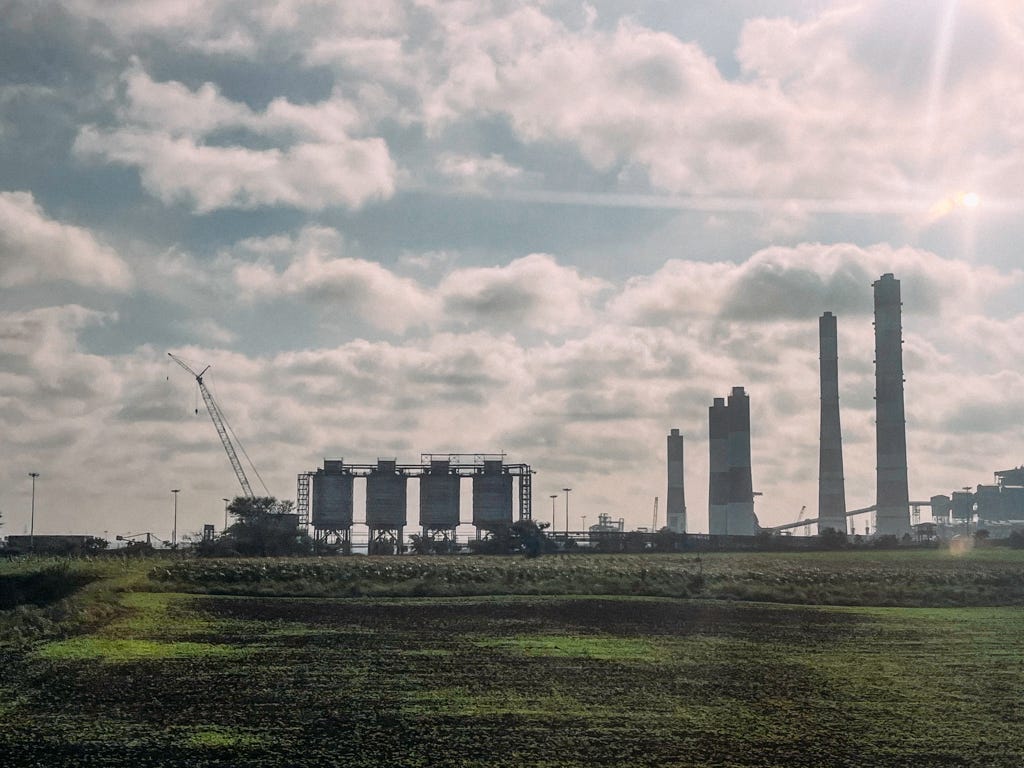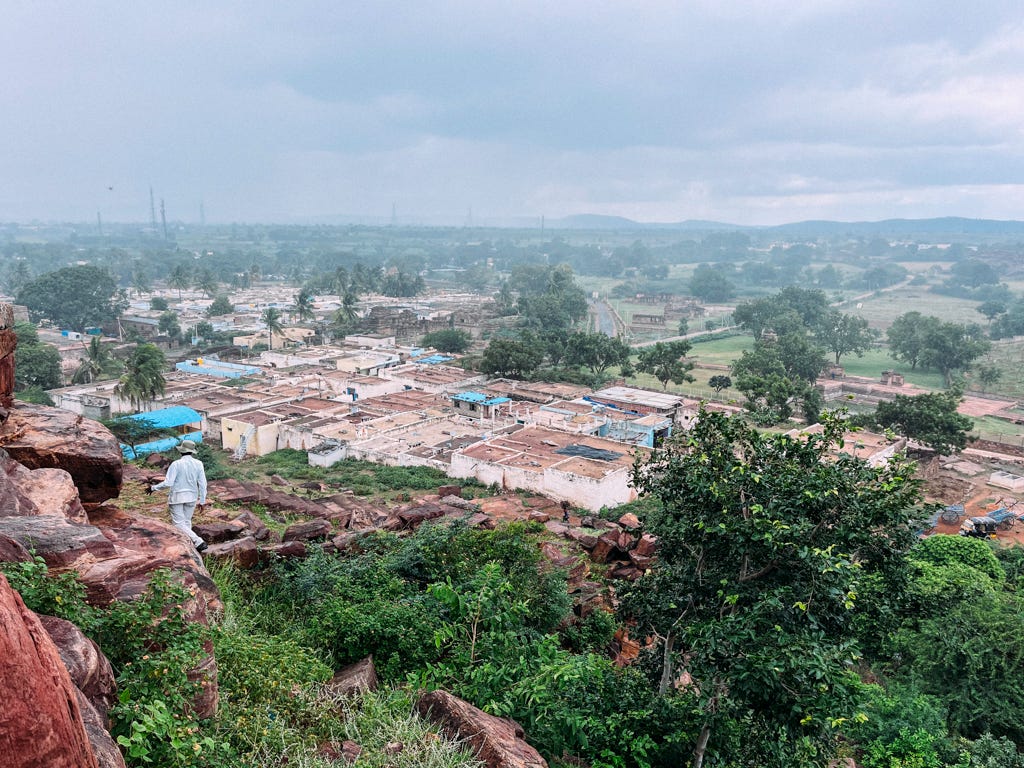In the long run, only two banks matter in a country with hundreds of banks - the right and left banks of the rivers. The rivers meander, flood, dry up and disappear occasionally, but rivers remember and come back to create life.
One of the smaller rivers that meanders through the Deccan rocks of Central India is Malaprabha—a 304-kilometer-long river that has attracted humans for centuries. The rocky landscape that flows through Badami, part of a prehistoric river, created the rocky landscape - geologists call it the Kaladgi Basin.
Today, Badami is an almost forgotten spot on the Deccan tourist trail, overshadowed by Hampi to the southeast of here. More about Badami here.
If you visit this place, keep some time reserved for moments of peace to contemplate the scenery and life on the banks of the river.
One of the seasonal creeks that drain the Badami sandstones trickles down the rocks and passes through a small green valley called Mahakuta. A beautiful old temple has a pool for devotees to bathe and play in.
The fields and trees on the banks of the Malaprabha at Galaghanath Temple Complex, Aihole, downstream from Badami.
The river replenishes the water table here in this almost arid region. The region where the river deposits its sediments is a rich black and is used to grow millets and vegetables and closer to the river - the water-sucking sugarcane sustained by the economics of the wasteful sugar industry rather than the availability of water and soil.
Overdraft from the other bank.
Shrub, pastures, and agricultural land comprise most of the river’s valley. But Malaprabha is the tributary of the River Krishna. It’s one of the most dammed rivers in the world, and one of its largest dams is close by at Alamatti. The water stopped here is mainly used for agriculture - as water loans for crops. But as India changes, it will produce electricity (thermal plants that use water) and water-intensive industrial-scale crops and satisfy the taste of expanding urban pockets along the river.







